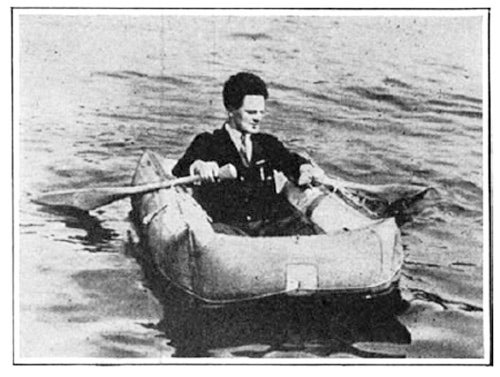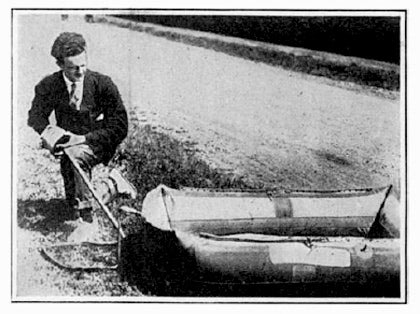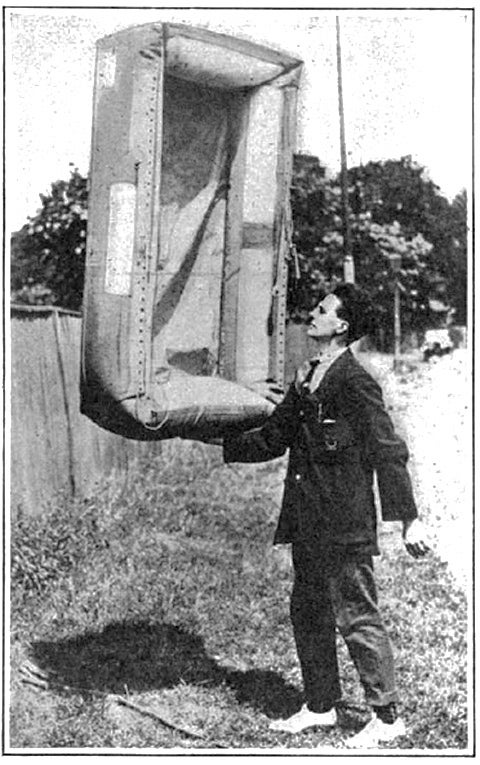This article was published in Scientific American’s former blog network and reflects the views of the author, not necessarily those of Scientific American
Whereas this August 23, 1919, Scientific American article acknowledged that there wasn’t anything particularly novel about a portable boat, the convenience offered by the one invented by Mr. Swinburne of Southfields, England, made it stand out as a new and important invention.

Swinburne’s collapsible boat could be folded into a 2-foot long by 1-foot wide bundle, making it small enough to be carried by hand or under the arm. Four compartments—one on each side of the oblong floor of the boat—were filled blown up with air using a bellows that came with the boat’s equipment.
On supporting science journalism
If you're enjoying this article, consider supporting our award-winning journalism by subscribing. By purchasing a subscription you are helping to ensure the future of impactful stories about the discoveries and ideas shaping our world today.

The article does not state the exact weight of the boat, but rather says that it weighed “but a few pounds.” According to the accompanying photographs, it seemed to be light enough for a man to lift with one hand.

The collapsible boat was touted as a necessary accessory for the traveler and the camper. Now, someone just needs to work on getting those oars to be less cumbersome.
.jpg?w=450)
In the past, Scientific American featured novel inventions and listed recently granted patents, offering a catalogue to its readers. There was even an announcement to readers from the editors in conjunction with the U.S. Patent Office stating that anyone could write in and receive instructions on how to apply for patents. While the magazine no longer features a full list of recent patents or information on how to obtain one, I thought it would be interesting to find out what is currently involved in the patent process.
For anyone who is interested as well, there is an event coming up in NYC this Thursday, April 7th: Patent Basics for Inventors, Engineers, Scientists, Entrepreneurs, and Students hosted by the New York City Bar. The speakers include Alison L. Karmelek, Benjamin N. Cardozo School of Law & former U.S. PTO Patent examiner (and she just so happens to be my cousin so I can vouch for her vast knowledge of the patent process), T. David Bomzer, Day Pitney LLP, and Michael B. Cottler, Goodwin Procter LLP.
I’m excited and interested to learn about the changes in the patent process over the years and to hopefully meet some prospective inventors!
Find out more information here: http://www.abcny.org/EventsCalendar/show_event.php?eventid=1627